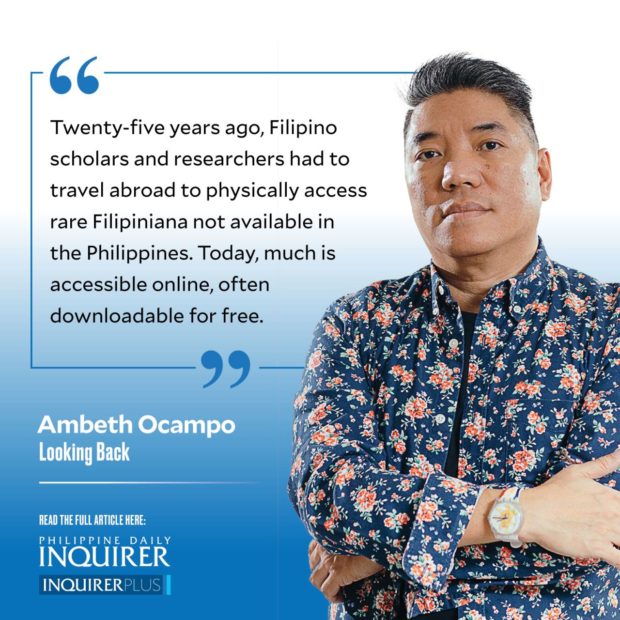Digital repatriation
Posting images of Philippine cultural artifacts in libraries or museums abroad always inspires a well-meaning but ignorant demand for repatriation. Four examples: the “Agusan Tara,” a pre-Spanish 21 karat gold image of a Hindu goddess that weighs two kilos in the Field Museum of Natural History, Chicago; the 1593 “Doctrina Christiana en lengua española y tagala” (one of the earliest books printed in the Philippines) in the US Library of Congress; a 19th-century salakot of carabao horn and silver owned by Jose Rizal in the Berlin Ethnological Museum; and lastly, Juan Luna’s 1888 “Battle of Lepanto” in the Palacio del Senado in Madrid.
I don’t want to appear unpatriotic, but we cannot demand repatriation since none were stolen nor taken forcibly from the Philippines as spoils of war or colonization. The spectacular Tara, found in Agusan River in 1917, was acquired by the Field Museum. The Doctrina was donated by an American bibliophile to the Library of Congress in the late 1940s. Rizal presented the salakot to the Berlin Museum in 1888. Luna’s historical canvas was commissioned by the Spanish Senate. Ideally, these treasures should be in our National Museum today for research and enjoyment, but if these were in the prewar National Museum they might have been lost or destroyed in the 1945 Battle for Manila.
Twenty-five years ago, Filipino scholars and researchers had to travel abroad to physically access rare Filipiniana not available in the Philippines. Today, much is accessible online, often downloadable for free. It’s the next best thing, physical artifacts can remain abroad but be digitally repatriated. Dr. Cristina Juan of the University of London School of Oriental and African Studies has been coordinating an exciting digital resource called “Mapping Philippine Material Culture.” Part of it grew from an unpublished inventory of Philippine artifacts abroad by Marian Pastor Roces funded by the National Centennial Commission in the late 1990s. Images and data unearthed from Marian’s “baul” generated online conversations that placed these objects from a lost time in context and underscored their continuing relevance to us in contemporary times. A similar project at “co-curation” is ongoing at the Field Museum coordinated by Dr. Almira Astudillo Gilles. By reviewing, correcting, and updating existing museum accession data, Filipino volunteers connect and learn from material culture of another age. Another conversation, this time on Cordillera textiles, is coordinated by Dr. Analyn Amores, director of the UP Baguio Museo Kordilyera. First, she compiled images of Cordillera textiles, collected by 19th-century German travelers, in the ethnological museums of Berlin, Dresden, Frankfurt, Leipzig, and Vienna. Then she showed these to contemporary Cordillera weavers who encounter old textile designs and motifs, learn from their history, thus building and strengthening ethnic identity and culture from their past.
As a historian, I am most excited about the plan to digitally repatriate more than 1,500 books and manuscripts looted from what is now San Agustin Church during the British Occupation, 1762-1764. Dr. Christina Lee of Princeton University and Dr. Cristina Juan first looked at the provenance of individual items located in various libraries worldwide, then using the old monastery catalog along with sale and auction records traced ownership back to 18th century Intramuros. When scanned and digitized, all these can be repatriated to regenerate the ancient library providing material to provoke new research and insights.
It is significant that all these spadework is being undertaken by women. Where are the male scholars in this scheme of things? Not all the work is being done abroad, much digitization back home has been accomplished by the National Library, the Lopez Museum, the Filipinas Heritage Library, the University of Santo Tomas, and the University of the Philippines Main Library that could provide more open access as the British Library, Library of Congress, Biblioteca Nacional de España, and Bibliothèque National de France. So you see there is more engaging material to be had online aside from TikTok, Netflix, and porn.





















